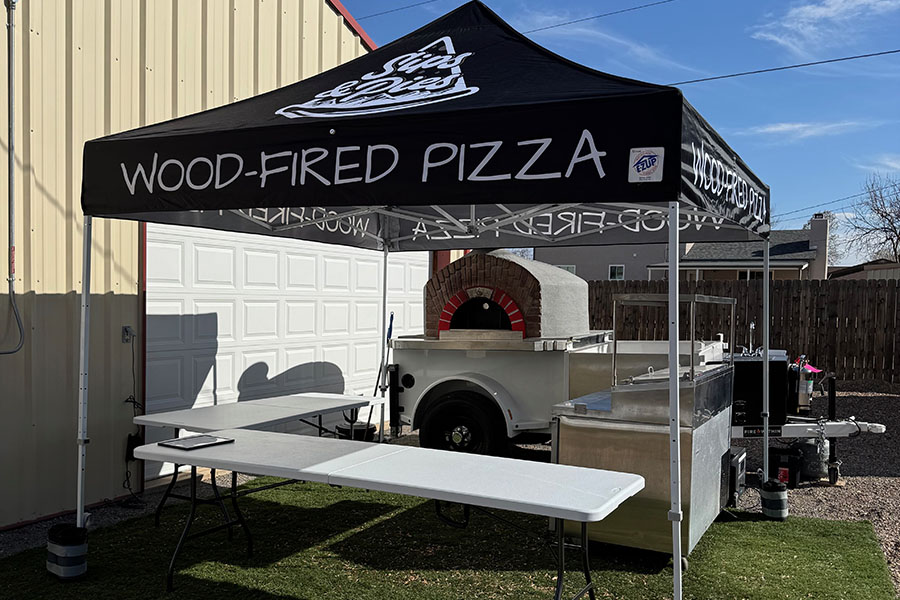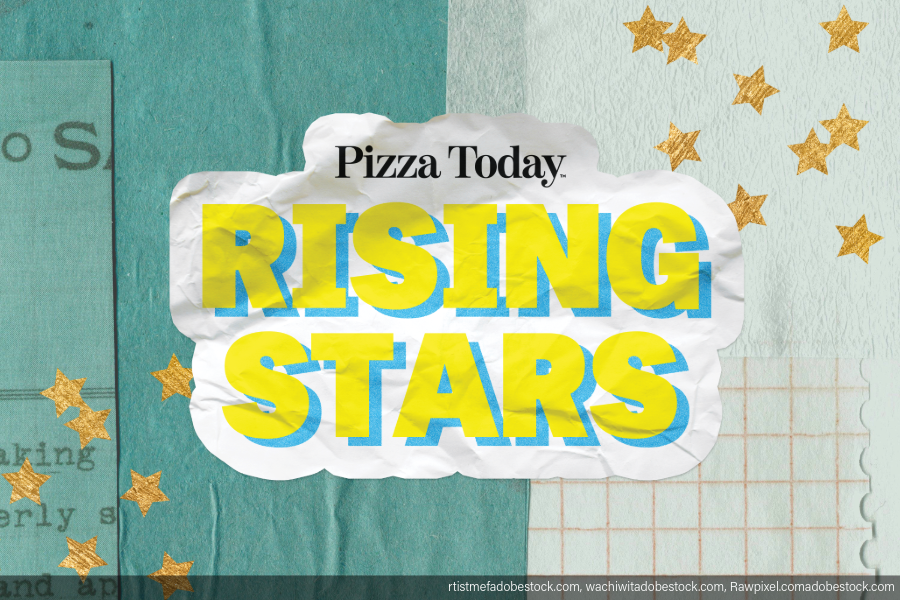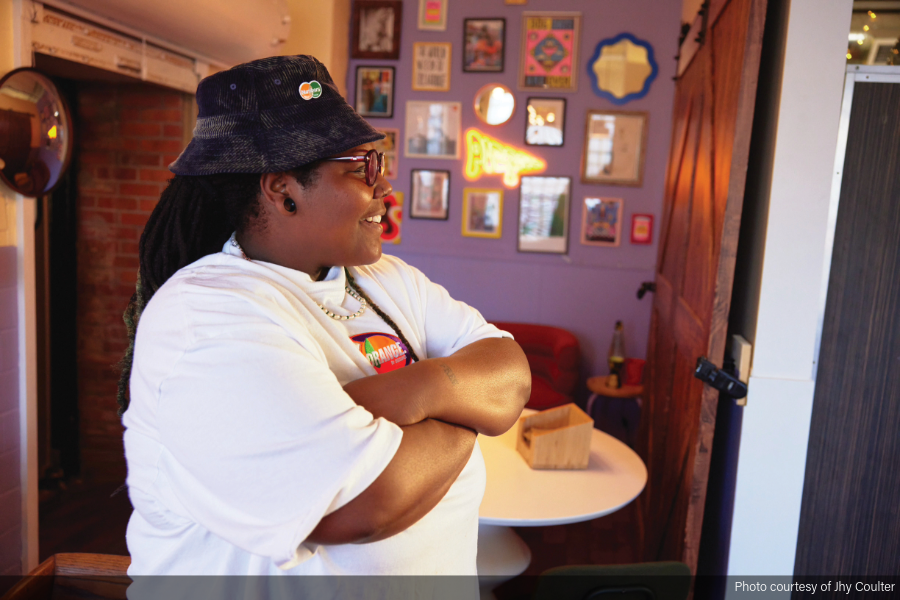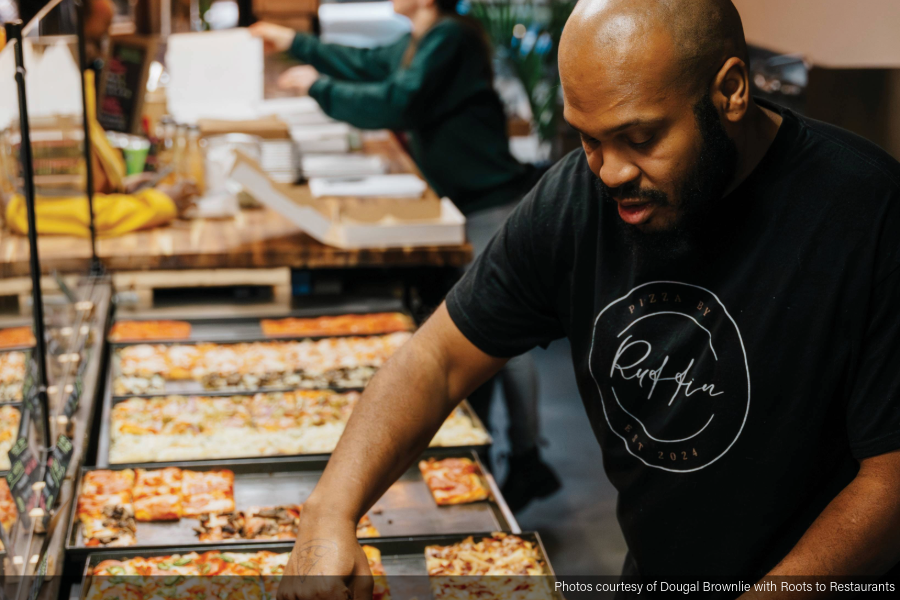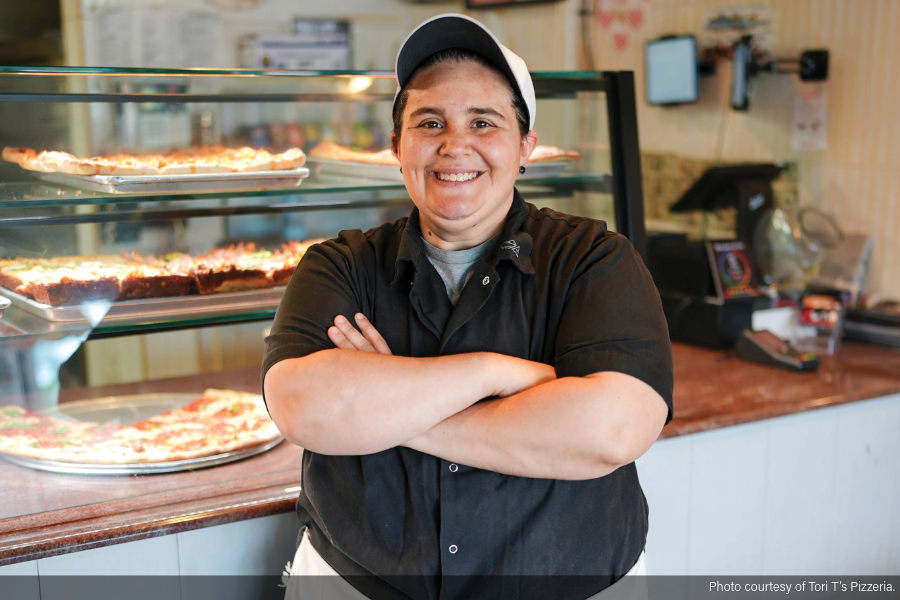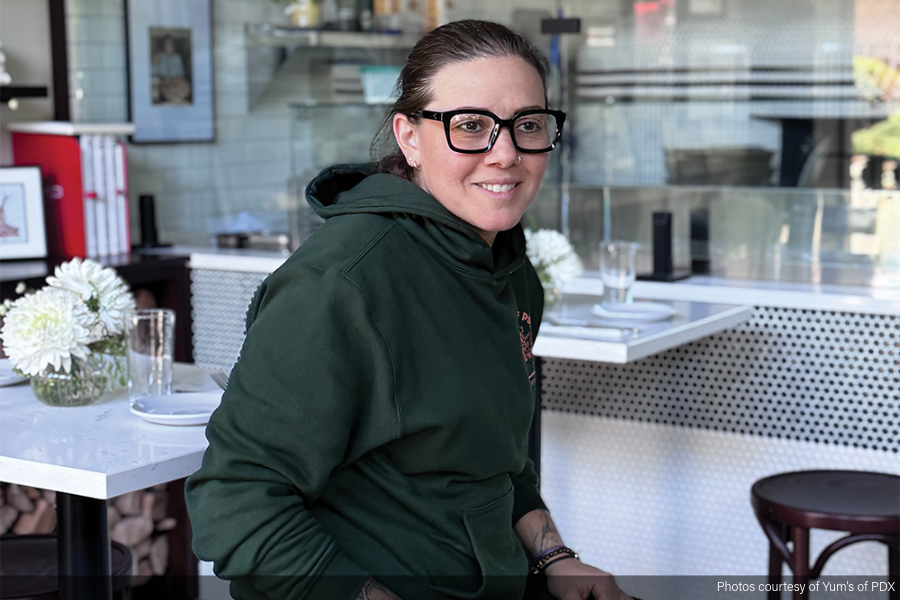 An exhausted Justin Wadstein yawns after working 16 of the last 24 hours at Kianti’s Pizza & Pasta Bar in Santa Cruz, California. For the 23-year-old pizza maker, it’s payback time: In early April, he spent a week competing in the acrobatic dough-tossing challenge at the Campionato Mondiale della Pizza (World Pizza Championships) in Salsomaggiore, Italy, and he’s still catching up on work. And with a paid gig spinning skins scheduled out of town next week, he’s working extra to give coworkers some time off before he scrams.
An exhausted Justin Wadstein yawns after working 16 of the last 24 hours at Kianti’s Pizza & Pasta Bar in Santa Cruz, California. For the 23-year-old pizza maker, it’s payback time: In early April, he spent a week competing in the acrobatic dough-tossing challenge at the Campionato Mondiale della Pizza (World Pizza Championships) in Salsomaggiore, Italy, and he’s still catching up on work. And with a paid gig spinning skins scheduled out of town next week, he’s working extra to give coworkers some time off before he scrams.
Asked if the time and effort required outside of his job is worth it, Wadstein just laughs. “When people ask me, ‘What’s the benefit of those competitions?’ I know they don’t understand,” says Wadstein, a past U.S. and world individual and team acrobatic champion, and a member of the U.S.- based World Pizza Champions. Nineteen other WPC members traveled to Italy this year to face some 350 international peers in acrobatic and baking battles. Prior to competing, Wadstein had barely ventured out of California. Now he regularly travels the country performing for pay and has been to Italy five times. “And,” he adds, “I make money at it.”
Though not a dime of it at the championship in Salsomaggiore, the battle competitors deem the preeminent dough duel. Ironically, winners in “Salso” receive only inexpensive medals — a far cry from the $10,000 cash prize awarded for first place at the International Pizza Challenge in Las Vegas. Yet for them, Italy is the place to be, the pizzaioli proving ground regardless of the time and cost required.
Most WPC members spend a day traveling there and stay gone at least five. The tab for airfare, hotels and food averages $3,000. WPC team founder and nine-time world champion, Tony Gemignani, says many team members’ costs are defrayed by sponsorships. “A lot of our guys pay close to nothing because of sponsor help,” Gemignani says. “Their sponsors believe in what they’re doing and they want to be part of it. They see what we do as important.”
The question, “Important to whom, exactly?” yields different answers from nearly every team member. WPC member Bruno Di Fabio says pizza competitions are more for fun than anything. “First off, I do it for the camaraderie and the competitive spirit,” says Di Fabio, who owns five pizzerias in New York and Connecticut. “I played baseball as a kid, which is where I got those, but now, I don’t get either anymore unless I’m with the (WPC) team. … Yeah, I want to win, but those competitions mean so much more than that.”
Yet as holder of multiple world championships in dough stretching and fastest pizza making, Di Fabio has shrewdly maximized those accomplishments by alerting the media. “Yeah, I do that; it’s good for business,” he says. “But, honestly, I don’t stay up at night wondering if that’s going to happen or worrying about spending the money to go to Italy. I do this because I enjoy it … and it’s Italy, man! I love it there.”
No one has worked the publicity angle better than Gemignani. As the most successful competitive dough tosser ever, he recognized the marketing potential early on when his groundbreaking routines netted three Pizza Olympics titles at Pizza Expo in 1995- ’97. Multiple media outlets produced stories on his floury feats, and viewers who saw them came to Pyzano’s Pizzeria, the Castro Valley, California, spot owned by him and his brother, Frank.
When Gemignani learned of the World Championships in Salsomaggiore, he thought, “If that’s the best of the best, the Super Bowl of pizza tossing, then I want to go there,” and he did, winning acrobatic titles in 2000 and 2001. Stints under the spotlights of “The Jay Leno Show” and “The Today Show” followed, and over time, dough tossing produced a substantial side income for Gemignani. Most importantly, he stresses, his hobby became an ultra-successful marketing campaign for Pyzano’s. Without that, he believes Pyzano’s would be just an ordinary pizzeria.
“We’d just be two guys making pizzas for 40 years without accomplishing much more,” he says. He founded the WPC in 2004 to teach others how to succeed in competitions and boost their sales. “I don’t think I could ever put an amount on what this has done for our business, but it’s a lot. Millions (in sales), I bet. Seriously.”
Gemignani also insists the combination of world travel for competitions and dough-tossing demonstrations have profoundly changed Pyzano’s own pizza lineup. “That’s really influenced what’s on our menu now,” says Gemignani, who staged an unprecedented coup when he won the technically daunting Best Neapolitan Pizza contest in Naples, Italy, in 2007. “I want to grow as a pizza maker; I always want to get better. That it’s such an education for me is a big part of why I do this.”
But not all view competitions as favorably. Chris Bianco, owner of Pizzeria Bianco in Phoenix, America’s only pizzaiolo to win a James Beard Award, told this reporter in 2006, “These contests are of the devil because they’re focused on the wrong things.” If the pizza doesn’t come from the pizzaiolo’s own kitchen, he said “it’s not authentic. So instead of traveling to all these contests, why not stay in your pizzeria and do your best for your customers — and let them judge if yours is best.” Gemignani respects Bianco’s viewpoint but disagrees.
“There are a number of ways to research and practice making your product better,” Gemignani began. “Chris practices his way, and we practice on the field of these contests and bring that back to our restaurants.”
And that’s where it matters most, says former world champion Michael Shepherd. He learned that lesson the hard way when he took a competitive hiatus in 2007. “So many (customers) said, ‘What do you mean you didn’t go to Italy? You always go,’” says Shepherd, owner of two Michael Angelo’s Pizza units in Ohio. In April, Shepherd took home the bronze for largest dough stretch. “It’s like they see you representing their town. They want you to do it.” Shepherd and Di Fabio insist the long road trips also help their businesses by providing downtime to ask peers for help with operational challenges — questions they can’t ask even friendly competitors in their own markets.
“When I’m talking to Michael, we’re talking menus, we’re talking profit percentage or what my gas and electric bill should be as a percentage of total sales,” Bruno says. “That’s our business, that’s our livelihood.”
Joe Carlucci is candid about the financial returns from pizza competitions, estimating his personal take at about $100,000 since beginning seven years ago. As a former pizzeria owner in Connecticut, and now as general manager and pizza maker at Tortora’s Casual Italian and Family Dining in Huntsville, Alabama, he views competing as benefi cial to any restaurant because customers are intrigued.
“People think, ‘Man, if he’s going to Italy, he must be pretty good,’” says Carlucci. “You come back, put pictures on the wall, maybe a trophy if you won, and they see the story. It gets them interested.”
Much more interested than in coupons or two-for-one deals, adds Gemignani, who didn’t medal in Salsomaggiore. “The dollars spent to go to a competition aren’t much more than sending out a direct mailer to everybody,” he says. “But the story you come back with, that leaves an impression on a customer’s mind that a coupon never will. An experience never expires, but a coupon does. What we do is so much more memorable than that.”
Steve Coomes is a former editor at Pizza Today. He now freelances for a variety of local, regional and national publications.
